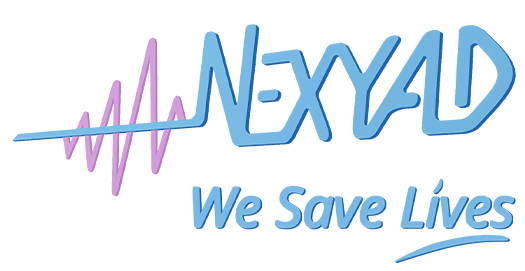SafetyNex for Onboard Road Safety Measurement
SafetyNex for Onboard Road Safety Measurement by NEXYAD
INTRODUCTION
Car manufacturers and insurance companies both need a system that would estimate in real time the risk taken by the driver.
Most commercial applications use to consider that a driver that do not accelerate much doesn’t take risk, and that a driver that drives more sporty is dangerous.
However, insurance companies statisticians could notice that there no correlation between the driving style and the accidents.
It is completely obvious : danger comes when the driving style is not adapted to the infrastructure. So driving style doesn’t has no meaning by itself.
NEXYAD company has been working since 1995 on onboard risk estimation, and recently launched their module SafetyNex that estimates a risk which is correlated (by construction) with accidents.
SafetyNex is the result of three collaborative French research programs :
. ARCOS
. SARI
. SERA
SafetyNex measures onboard the adequacy of driving style (and in particular the speed of the vehicle) with the characteristics of the infrastructure : adequacy of the current speed and initiated acceleration to the radii of curvature of bends downstream, to the presence of downstream crossings, or pedestrian crossings, … etc.
It is possible to add to SafetyNex optional inputs such as :
. weather report,
. maximum grip
. atmospheric visibility (rain, fog …)
. distance to obstacles (coming from an ADAS system) and in this case, we use not only infrastructure characteristics but also trafic flow information that describe the way other users move on the same infrastructure.
Similarly, can be integrated into SafetyNex data from characteristics of ADAS in order to measure the adequacy of these driver assistance systems to the situation experienced by the vehicle on the infrastructure.
For example, if the vehicle has radar or camera, the data of the opening angle enable SafetyNex (which read shape of the infrastructure from the onboard navigation map) to compute the distance of geometric visibility, not for the driver, but for embedded artificial perception systems.

EXAMPLE OF USE IN URBAN TRAFFIC
The example below shows the predictive nature of safetyNex : when you get in an intersection, it’s a little before that you must slow down because you can not know what is likely to emerge from this intersection. However, when one is in the intersection, it is not dangerous to re-accelerate. This is the way that safe drivers use to drive.
Therefore, the risk score is not correlated to the value of the deceleration or acceleration but to the adequacy of speed to potential dangers of the infrastructure. You may drive sporty or lazy and have the same good or bad safety score computed by SafetyNex.
Video with sound (spoken explanations)
CONCLUSION
SafetyNex is now available for sale and is operating in the following environments:
. Framework RT-MAPS PC : This version is for automakers researchers, scientists of tier one techno suppliers, statisticians and actuaries of insurance companies. It allows real-time replay, in order to see what areas make the risk climb, it also allows to correlate the new variable (risk) with all other variables available, and for car manufacturers, it lets develop ADAS based on this module.
RT-MAPS is interfaced with the Data Base Management Systems, which is convenient to apply SafetyNex on the company’s information systems.
. electronic device of an automotive tier one company : the announcement will be made soon by the automotive tier one techno supplier.
. mobile phones (December 2015), which will allow everyone to have this road safety module.
To know more : sales@nexyad.net























